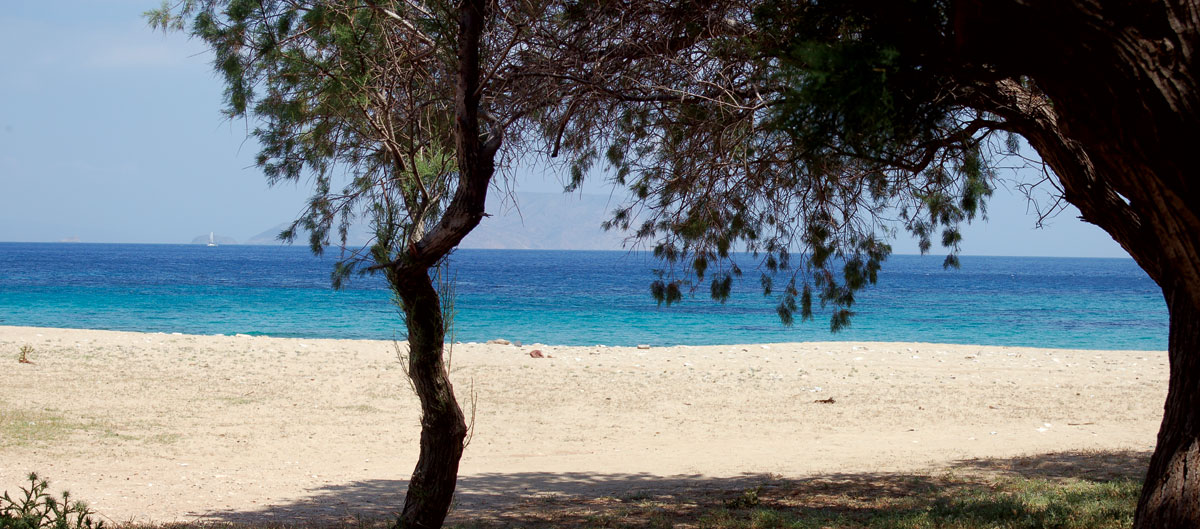
The name of the island derives from the word Ía, which is the name of a flower that grew everywhere in antiquity.
The history of Íos is linked with the life and death of the epic poet Homer. Historically, it has been verified that Homer’s mother, Klyméni, was born and died in the island of Íos. According to tradition, Homer also died there, when he was unable to solve a riddle the locals asked him, as was their habit. In a different version, Homer died at sea, whilst on board a ship passing close to Íos. He was buried at sea and his body was washed up on the island. The locals found him and buried him properly. Today, in the area of “Plakotós”, the grave of Homer can be found together with an engraving characteristic of the appreciation of the islanders.
Initially, the island was colonized by the Ionians of Asia Minor, who came because of its large and safe harbour. Next, the Minoans from Crete settled here (2000 – 1500 BC), however their civilization was buried under the lava from the exploding volcano of neighbouring Santoríni.
Around 1100 BC, Dorians arrived on the island and named it with today’s name of Íos. From then on, the history of Íos followed closely the events in the larger area of Cyclades, as a member of the Athenian Alliance, as a place of exile during the Roman times, as a hideout of pirates in the Byzantine years.
In the beginning of the 13th century AD, the island was conquered by the Venetians and around 1397 AD, the commander of the island Marco Crispo fortified the Chóra with walls and a castle, ruins of which can still be seen today.
In 1537, Íos submits to the Turks, and a period of heavy taxation and hardship begun, whilst still being raided by pirates. As a matter of fact, the Turks used to call the island “small Malta”, due to its natural harbour but also because many Christian pirates wintered there.
At the time, the harbour of Íos was renowned by the historic victory of the French knight De Benneville, a famous pirate known by the name of Temericourt. At the end of the 18th century, all of the Turkish fleet (60 ships) with 2000 janissaries, enclosed Temericourt inside the bay of Íos. The French knight fought continuously for 8 hours, up until he managed to break the circle, under fire and iron, escape through the Turkish ships and sail away to the open pelago.
The island is known today as the “Youth’s Mecca”.
Íos (Chóra): Its built on and around a hill. On top lies the chapel of Ágios Nikólaos as well the remains of the medieval castle (14th century). A little further down is the church of Panagía Gremiótissa, built on a steep rock (its icon is thought to be miraculous). An archaeological museum operates within the Town Hall.

Agía Theodóti: A very nice beach. A few fishermen houses and taverns ashore. Close, ruins of a byzantine castle and an ancient aquaduct.


